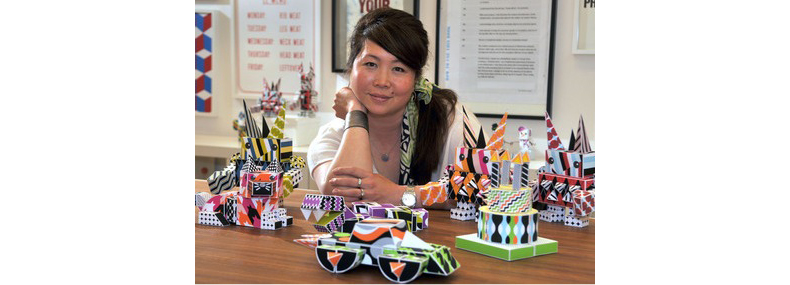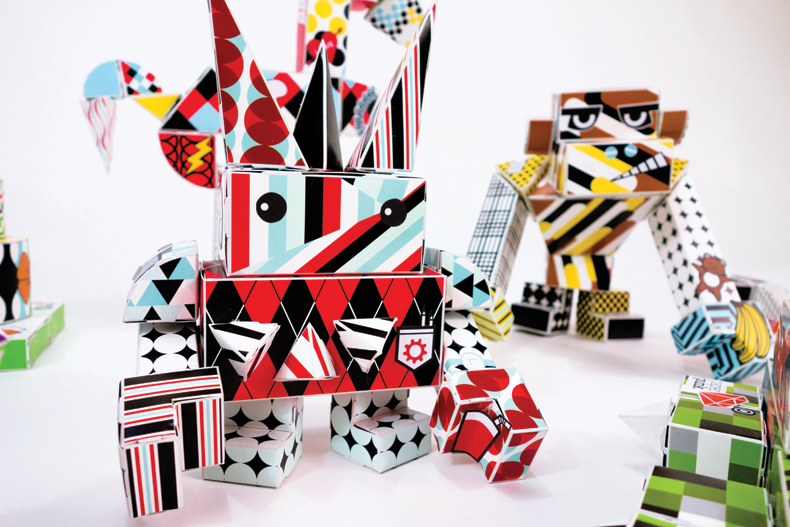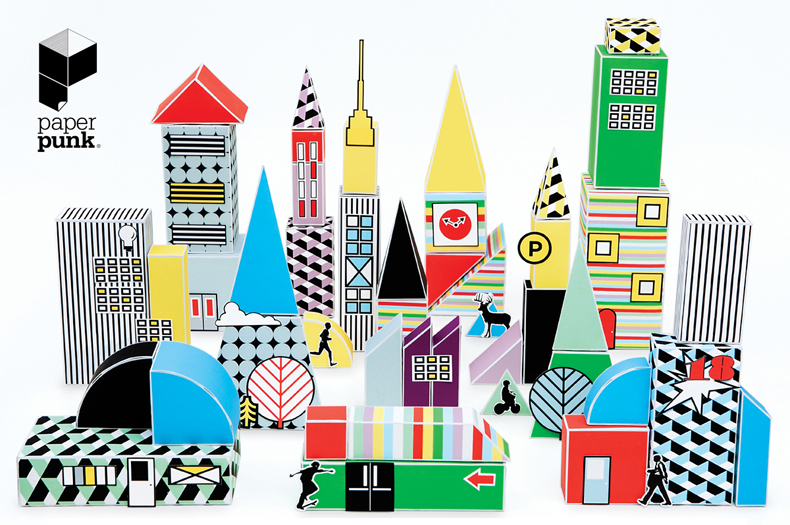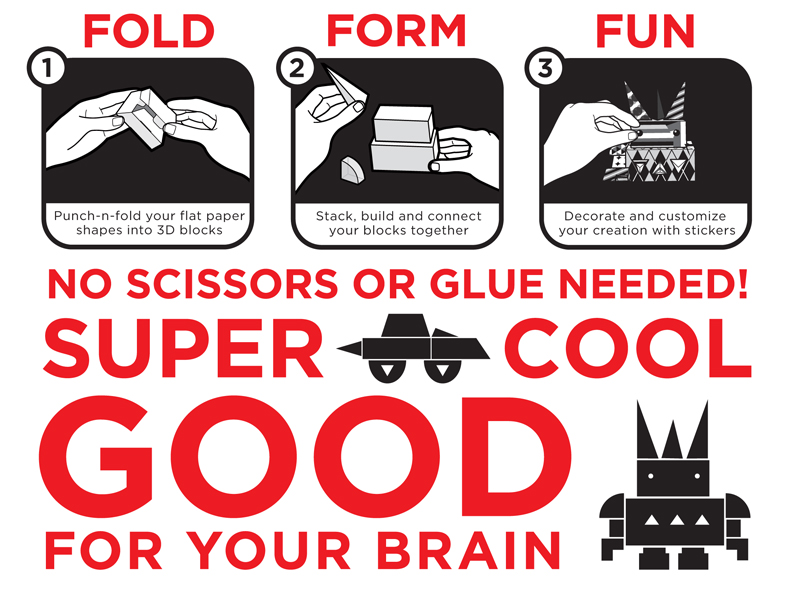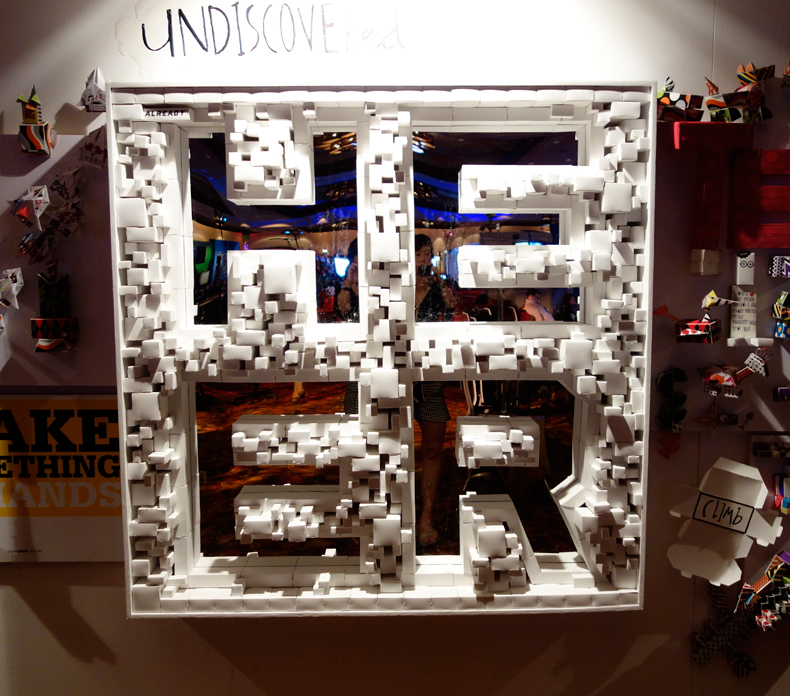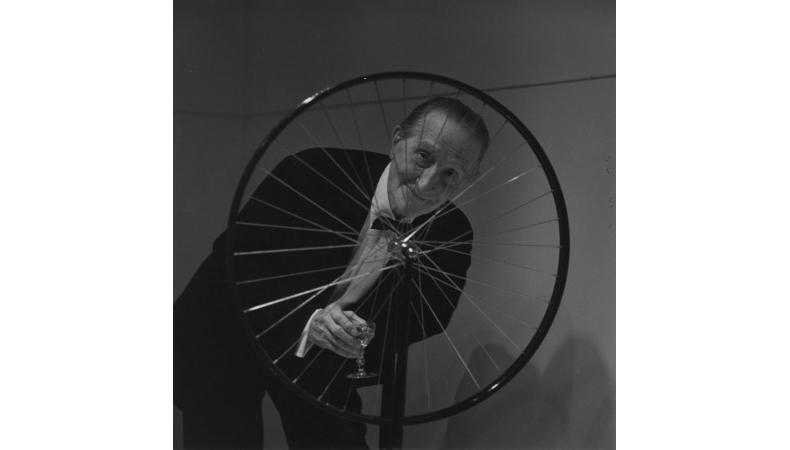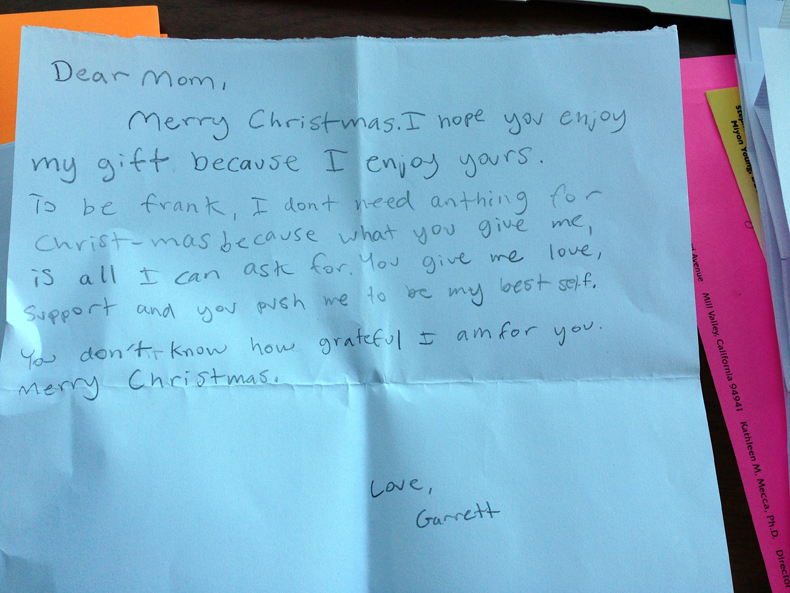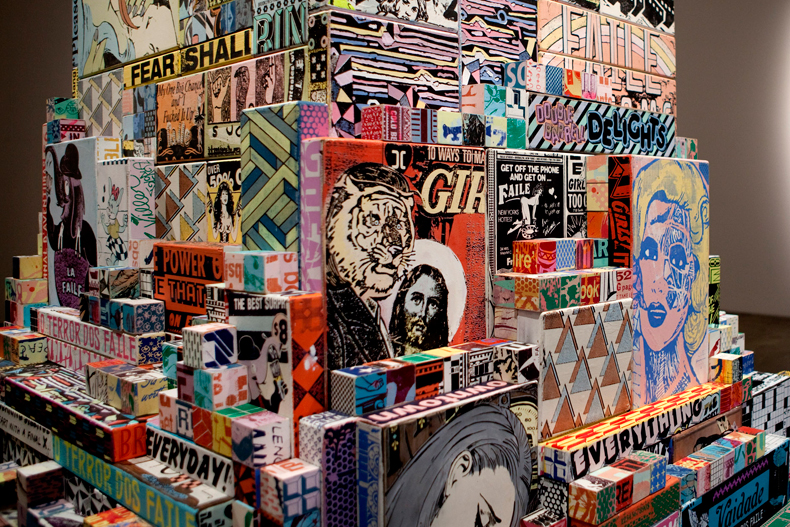Feb 03, 2014 8 Questions With Grace Hawthorne
Grace Hawthorne is one of those unique people who is savvy about business, organization, and logic, as well as brilliant with creation, imagination and art. Amazingly, she has nurtured a career that embodies both worlds as an artist, (five-time) entrepreneur, author and educator. A co-founder of ReadyMade magazine, she was an early pioneer in the DIY culture. Growing that business over four years, she was able to successfully sell the company to Meredith Corporation. Currently, at Stanford d.school she is spearheading Creative Gym, a new experimental studio focused on honing design intuition and creative confidence. I first engaged with Grace a few years ago when she promoted a Kickstarter campaign for her start-up Paper Punk, an innovative paper-based building toy. Paper Punk is still growing strong, and it’s a great time to highlight the brand’s achievements and Grace’s life story of melding art and commerce.Grace graduated cum laude from UC Berkeley in Visual Communication/Art, holds an MBA from the Anderson School of Business at UCLA, and an MFA from the UCLA School of Theater, Film and Television. Her artwork has been exhibited in the Cooper Hewitt Design Museum’s Triennial, the Institute of Contemporary Art Boston, PMCA Design Biennial in Pasadena, Contemporary Arts Museum Houston and the Jewish Contemporary Museum in San Francisco. Grace has also been a board member of the University Art Museum, Humanities West, and SFMoMA’s Media Arts Council.
How did you come up with the Paper Punk concept?
Paper Punk was borne from a combination of worry, frustration, and appreciation: Worry– I began to worry about people’s ability to physically know and understand our built world when my graduate students were stumped by a simple dimensional thinking exercise in my Creative Gym class at Stanford’s d.school. The exercise shows the student the front view and side view of a 3D object and then they are asked to draw what they think the object looks like. There’s more than one solution and on average only 3 out of 40 students arrive at a plausible outcome. Real wisdom comes from doing, so I asked myself how can people engage in tangible acts of doing/making in a fun, easy way. Frustration– I became incredibly frustrated when I was unable to donate medium sized Legos my young kids had outgrown to Goodwill a couple years ago. Apparently, they only accepts donations of plush (yuck?!) since the lead paint scare years ago (yes, Legos is made of plastic). My note to self was that people need a building toy that can go into the recycle bin versus the landfill. Appreciation– I commissioned paper toy extraordinaire Shin Tanaka to create a crew of paper toy figures for one of my other pet projects and became so enamored by his craft in the process. I am an almost-luddite and am incapable of making uber complex geometric sculptures on the computer like Tanaka, so I needed to create a way for me (and anyone) to build paper sculptures/toys offline modularly without being a computer whiz. Paper Punk’s inspired birthright is as a recyclable creativity tool/toy that enables people to modularly build amazing paper toys/sculptures with a few simple folds. It was founded with a simple ambition– to keep us connected to the tangible world by making cool things with our hands. In hindsight, Paper Punk feels like a natural progression from my last start-up, the culturally groundbreaking ReadyMade magazine, where we were inspiring people to make things with their hands. With Paper Punk, we’re enabling people to make things with their hands.
Describe your typical workday.
I’ll be the first to admit that fortuitously for me, there is no typical workday. There are so many facets of Paper Punk that I oversee and execute on daily basis like production, design, distribution, sales. marketing, operations, etc. that no two days are ever alike. I’ll also share that it’s not for the faint hearted, but I cannot resist the irregularity, spontaneity and the freedom of the process of creating something from nothing. The b-school side of my brain will tell you the two main components of the business are making the widget and selling the widget. But at the core, creating Paper Punk satiates the art side my pursuit and passion. I can’t help but think I’m the luckiest girl alive when I’m in the depths of designing, prototyping, making, playing with and refining our Paper Punk offerings.
What has been the best thing about the growth of your company?
The best thing about the growth and expansion of Paper Punk is knowing more people will be exercising their creativity by building Paper Punks. Staying connected to the tangible world in a digitally dominant environment is increasingly difficult. Making a Paper Punk is like doing a sit-up for your brain. While our bodies need a strong core to play any sport, our brains also need a strong core to practice any discipline. I’m spearheading a creativity study at Stanford at the d.school with the school of medicine that shows that your creative capacity is like a muscle that needs to be exercised to strengthen and flourish. Anyone can increase their creative capacity just by exercising it. As our company grows, we keep connecting with kindred spirits in other diverse industries/companies/organizations that want to collaborate with us so their community can take part in the Paper Punk experience. Some of our really fun partners include TEDx, Marriott, Code for America and Dwell on Design.
What are some lessons to share as you’ve evolved?
The slow progression of our step-by-step growth pattern occasionally feels like an eternity, so we have to constantly remind ourselves that we’re less likely to fall off the ladder taking things a single rung at a time. For example, Nickelodeon invited us to make Paper Punk Teenage Mutant Ninja Turtle kits over a year ago. At that time, we had just launched our first three titles to retailers and doing a licensed kit felt premature and fiscally risky. Fast forward a year and a half later since their first inquiry and here we are with Paper Punk Teenage Mutant Ninja Turtle kits landing stateside in two weeks. While it was a difficult decision, we concluded that if our company’s main goal is to get as many people to make things with their hands and the Teenage Mutant Ninja Turtle IP is going to help us inspire even more people to make Paper Punks, then why wouldn’t we do it? The turtles turned out so cool too! We’ll see if Donatello, Raphael, Michelangelo and Leonardo can help increase our user base. Bottom line is that there are no shortcuts and anything with longevity needs time to take root, so we must remember to be patient, flexible and bold.
As a kid, what did you aspire to be?
In kindergarten, I traded puppy and bunny paintings for cuts in line, so maybe the seeds of my life mission to marry art and commerce were already sown back then. Both my immigrant parents ran small businesses so I had an early exposure to how initiative led to accomplishment. As a kid, in lieu of a baby sitter, they’d drag me to work with them on the weekends. I did some unconventional-for-a-kid things while helping them, from building PVC backyard sprinkler systems to soldering computer components to attending fashion shows. What a great exposure to how things work in the world. I remember telling my dad in elementary school that I wanted to be a fashion designer and he said, “If you really wanted to be a fashion designer, you’d already be sewing your own clothes.” That one statement communicated two very important things, first wanting something isn’t enough, what are you actually doing about it?; Second, you aren’t a fashion designer instantaneously, there’s a progression of experiences that lead to what you become. As the resident artist at all my schools from kindergarten through high school, wherever I parked myself was sure to be at a place where making/creating was central. I’ll secretly admit that I still have fashion and movies on my bucket list.
Who is your favorite artist and why?
Artist Marcel Duchamp is my favorite artist of all time. He not only coined the term readymade and make art accessible, he really understood that it’s not about the object itself, but about the humanity that resides in the creation from the hand of its creator. Duchamp famously said, “I don’t believe in art. I believe in artists.” All our pursuits ultimately get distilled down to finding beauty and meaning in our lives and those discoveries reside in our humanness, in our ability to see/taste/touch/hear and in our ability to connect to nature/ourselves/each other. I’ve been recently crushing on a few contemporary folks like Wayne White, Mary Iverson, and Faile either because of how their work expresses the human condition or because their life practice is so pure.
What is the best gift you’ve received?
The best gift I recently received was a Christmas letter from my ten-year-old son. As a parent, you wonder how your kids are progressing. His note was sweet and affirming.
Where do you personally find inspiration?
Nature, music, food, people. Nothing beats the great outdoors, chest thumping tunes, a culinary cornucopia of texture/taste/temperature/colors, and cool company to share it with.
For more great Imprint content, be sure to follow us on Twitter, Instagram, and Facebook!



